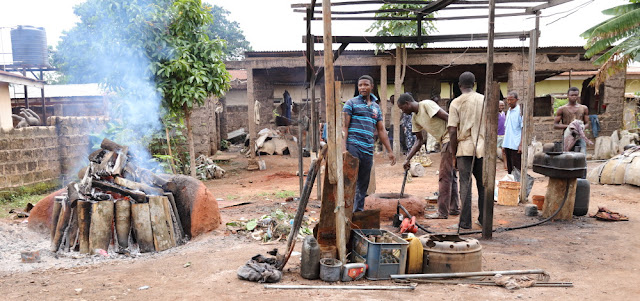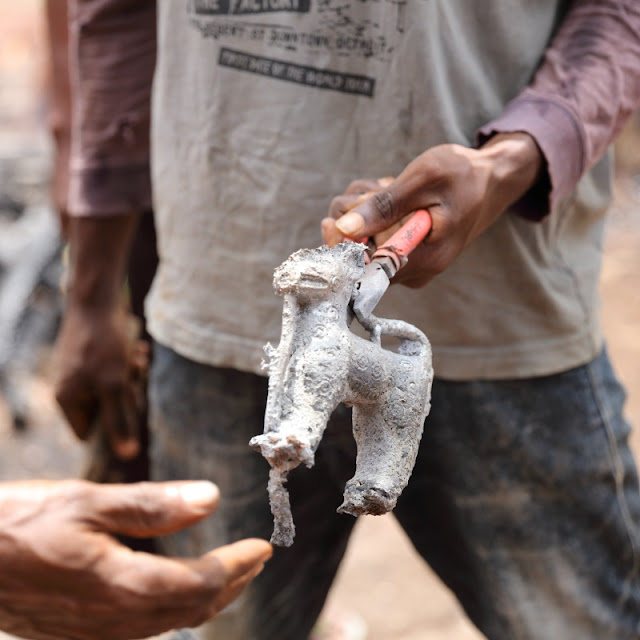 |
| Phil Omodamwen explaining the process of bronze casting |
The knowledge of the Isama was secretly guarded within the guild, women would not be permitted to learn the bronze casting technique in order to prevent their husband, not part of the guild, from learning it.
The Omodamwen family started as Isama around 1500 AD under the reign of Oba Esigie.
At the end of 19th century, the British looted many treasures from the royal court and, it is said, auctioned them in London to pay back the cost of their war.
The victory of the British also ended the royal exclusivity on bronze casting, so that Isamas could sell their production to the public as well.
 |
| the bronze casting workshop |
The garden has piles of dry wood which is the main energy source to bake the casts. At the back of the garden stands a two room mud building with a roof and large openings to provide good ventilation for clay casts to dry before they can be baked. Phil explained that the drying has to be slow in order to avoid cracks that would affect the quality of the bronze during the moulding process. Papaya trees among a few other trees were providing a green touch to the otherwise red colour of the soil.
The crafting process happens as follows:
1- hand moulding of a rough shape of clay that will be the backbone of the shape of the sculpture
2- cover the clay with a layer of wax
 |
| wax over clay to shape things up |
4- cover the wax with clay
5- let it dry for a few days
 |
| cover the wax with clay |
7- when the cast is readily baked, let it cool down for about an hour
8 - bury it upside down in the ground leaving just the space created by the wires open
9 - pour the liquid bronze in the cast
 |
| about to pour the liquid bronze |
11- then comes the time to polish and fine tune the details of the piece. The final polish can be either with olive oil and a brush to obtain a light golden finish or with some chemicals to oxydise the surface to get a darker mat finish, usually like what we see in museums or outdoor.
 |
| the birth of a leopard |
 |
| Phil next to a Bini Warrior |
The bronze casting process, an ancient historical technique by Africans, and they said in books that Africa has no history
ReplyDelete